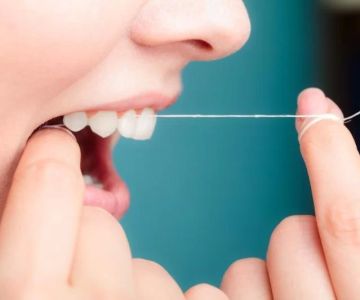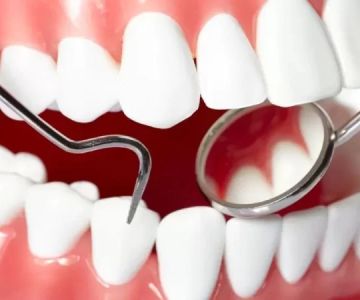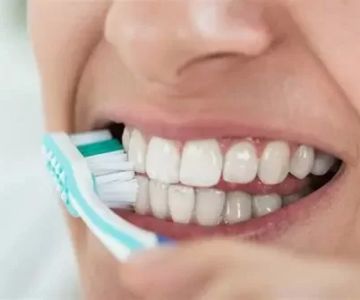
1. How Neglecting Oral Hygiene Leads to Long-Term Health Risks
Oral hygiene is not just about keeping a bright smile—it's a gateway to your overall health. In the United States, the CDC reports that nearly 50% of adults aged 30 and older have some form of periodontal disease. But what most people don’t realize is how silently poor oral hygiene can affect the body far beyond the gums and teeth.
The mouth is home to billions of bacteria. When oral care is neglected, these bacteria can thrive, forming plaque and tartar that lead to infection, inflammation, and eventually, tooth loss. More alarmingly, oral infections can travel through the bloodstream, affecting major organs like the heart, lungs, and even the brain. This isn't just about cavities—it's about your long-term well-being.
2. Major Risk Factors That Contribute to Poor Oral Hygiene
2.1 Inadequate Brushing and Flossing Habits
Skipping daily brushing or failing to floss properly allows plaque to build up, especially between the teeth and along the gumline. Over time, this buildup hardens into tartar, which can only be removed by a dentist. Without intervention, this leads to gingivitis, then periodontitis—a severe gum disease that damages the bone supporting your teeth.
2.2 Diet High in Sugar and Acidic Foods
Americans consume an average of 17 teaspoons of added sugar per day, according to the American Heart Association. Sugary and acidic foods feed harmful oral bacteria, which produce acids that erode tooth enamel. Over time, this results in cavities, sensitivity, and weakened teeth prone to cracking or breaking.
2.3 Smoking and Tobacco Use
Tobacco users are six times more likely to develop gum disease. Cigarettes, cigars, and smokeless tobacco interfere with gum tissue function and reduce blood flow to the gums. This not only delays healing but also masks symptoms like bleeding, leading to more severe, undetected progression of disease.
2.4 Dry Mouth (Xerostomia)
Saliva plays a crucial role in washing away food particles and neutralizing acids. Conditions like diabetes or medications such as antihistamines or antidepressants can reduce saliva flow. A dry mouth creates a perfect environment for bacterial growth and plaque buildup, increasing the risk of gum disease and tooth decay.
2.5 Poor Access to Dental Care
Millions of Americans, particularly in rural or underserved communities, lack access to regular dental services. Without preventive care, early signs of gum disease, decay, or oral cancer may go undiagnosed. This can lead to emergency room visits and expensive treatments that could’ve been avoided with routine checkups.
3. Real Story: When Oral Neglect Turned Into a Life-Threatening Infection
James, a 38-year-old from Ohio, hadn’t seen a dentist in five years. He ignored occasional bleeding while brushing and dismissed jaw discomfort. One night, he woke with a fever and severe facial swelling. He was rushed to the ER and diagnosed with a deep neck infection originating from a decayed molar. The infection had spread dangerously close to his brain. A week in the ICU and two surgeries later, James survived—but with lasting nerve damage.
This case isn’t unique. Dentists frequently encounter patients who underestimate the connection between oral symptoms and systemic health. Had James addressed the signs early, a simple filling or cleaning could have prevented the ordeal.
4. Systemic Conditions Linked to Poor Oral Hygiene
4.1 Heart Disease
Multiple studies have shown that gum disease may increase the risk of heart disease. Chronic inflammation in the mouth can lead to inflammation in the blood vessels, which increases the chances of artery blockages and heart attacks. Bacteria from infected gums may also enter the bloodstream and trigger clot formation.
4.2 Diabetes
Diabetics are more prone to gum disease due to reduced immunity and slower healing. At the same time, gum infections can make it harder to control blood sugar, creating a dangerous loop. Managing oral health is an essential part of diabetes care plans.
4.3 Pregnancy Complications
Poor oral hygiene during pregnancy is linked to premature birth and low birth weight. Hormonal changes increase gum sensitivity, and if not properly cared for, may lead to pregnancy gingivitis or even periodontitis. Regular cleanings and early checkups are crucial for expecting mothers.
4.4 Cognitive Decline
Recent research suggests a potential link between poor oral hygiene and dementia. Bacteria commonly found in gum disease, such as *Porphyromonas gingivalis*, have been identified in the brains of Alzheimer’s patients. While more studies are needed, the connection adds urgency to maintaining dental care, especially in aging populations.
5. Taking Proactive Steps Toward Better Oral Hygiene
5.1 Develop Consistent Habits
Brush twice daily for at least two minutes using fluoride toothpaste. Floss once daily, and use antimicrobial mouthwash when needed. These are the basics, yet they’re often skipped—make them non-negotiable in your routine.
5.2 Schedule Regular Dental Visits
Seeing your dentist at least twice a year is essential, even if you have no pain or visible issues. Dental professionals can detect early signs of disease, provide cleanings that remove hardened plaque, and offer personalized advice. If you're unsure where to start, check out trusted providers at Family Dentistry Online.
5.3 Address Issues Promptly
Don’t ignore signs like bleeding gums, bad breath, sensitivity, or jaw pain. These are red flags that need immediate attention. Acting early not only saves your teeth—it can protect your entire body.
6. The Bigger Picture: Oral Health as a Reflection of Overall Wellness
Your mouth is a mirror of your health. The risks associated with poor oral hygiene go far beyond dental pain or cosmetic issues. From heart disease and diabetes to brain function and pregnancy, oral care is a silent but powerful guardian of your well-being.
By understanding these risk factors and taking action, you’re not just preserving your smile—you’re protecting your future. For professional help, services, or recommendations, visit Family Dentistry Online, where your health always comes first.







 Personal Touch Dentistry: Wilma F. Antonio, DDS4.0 (234 review)
Personal Touch Dentistry: Wilma F. Antonio, DDS4.0 (234 review) Bensalem Dental Specialties Center3.0 (162 review)
Bensalem Dental Specialties Center3.0 (162 review) Charm Dental Group3.0 (14 review)
Charm Dental Group3.0 (14 review) Cavity Detective Pediatric Dentistry5.0 (81 review)
Cavity Detective Pediatric Dentistry5.0 (81 review) Divine Dentistry4.0 (434 review)
Divine Dentistry4.0 (434 review) Westside Pediatric Dental and Orthodontic Group: Michael L. Kleinman, DDS5.0 (89 review)
Westside Pediatric Dental and Orthodontic Group: Michael L. Kleinman, DDS5.0 (89 review) The Importance of Oral Health Education During Pregnancy for a Healthy Pregnancy
The Importance of Oral Health Education During Pregnancy for a Healthy Pregnancy Best Tips for Brushing Your Teeth Properly for Healthy Gums: Essential Techniques for Oral Health
Best Tips for Brushing Your Teeth Properly for Healthy Gums: Essential Techniques for Oral Health Why Skipping Dental Checkups Can Lead to Bigger Oral Health Problems
Why Skipping Dental Checkups Can Lead to Bigger Oral Health Problems Advantages of Porcelain Dental Restorations
Advantages of Porcelain Dental Restorations How Can Diabetes Cause Tooth and Gum Problems? Preventing and Managing Oral Health Issues
How Can Diabetes Cause Tooth and Gum Problems? Preventing and Managing Oral Health Issues Healthy Habits for Promoting Good Oral Health and Hygiene: Tips for a Healthy Smile
Healthy Habits for Promoting Good Oral Health and Hygiene: Tips for a Healthy Smile